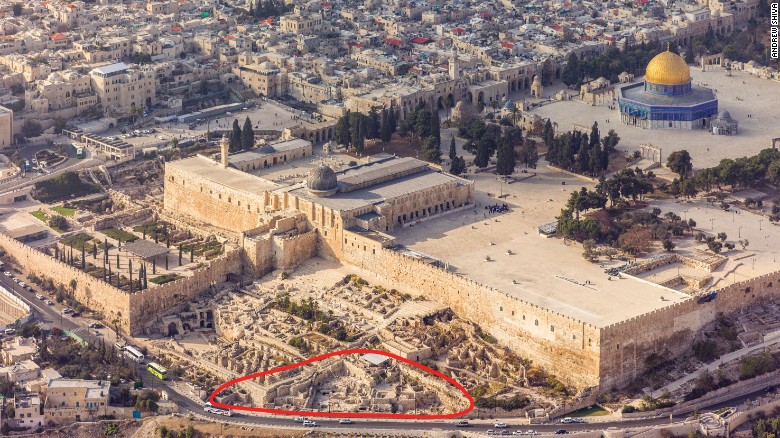A dump site is the last place you would expect to find an 8th century B.C. seal for a papyrus document signed by one of the kings of Judah.
Perhaps that's why it has taken 2,700 years for the piece of clay inscribed with King Hezekiah's seal to be discovered in Jerusalem.
It is believed to be the first-ever seal -- also referred to as a "bulla" -- from an Israeli or Judean King to be discovered by archaeologists.
"The seal of the king was so important. It could have been a matter of life or death, so it's hard to believe that anyone else had the permission to use the seal," Eilat Mazar, who directs excavations at the City of David's summit, told CNN.
"Therefore, it's very reasonable to assume we are talking about an impression made by the King himself, using his own ring.
"This the greatest single item I have ever found," added Mazar -- a third generation archaeologist.

The Ophel excavations were conducted at the foot of the southern wall of the Temple Mount.
The oval bulla -- which is 0.5 inches wide -- was discovered by a team from the Hebrew University of Jerusalem.
Led by Mazar, the team were excavating an ancient dump near the Silwan neighborhood beside the wall that surrounds Jerusalem's Old City.
The site itself, along with the nearby City of David, is contentious, because it is an Israeli archaeological dig in East Jerusalem next to a Palestinian neighborhood. Critics say the dig is politically motivated to extend Jewish claims over East Jerusalem and the Old City: archaeological finds become historical justifications
The seal is believed to have been discarded from a royal building, with the rubbish.
The impression on the clay bears an inscription in ancient Hebrew script that translates as: "Belonging to Hezekiah [son of] Ahaz king of Judah."
It features a two-winged sun, with wings turned downward, flanked by two ankh symbols symbolizing life.
Other bullas bearing the name of King Hezekiah have been seen on the antiquities market. However, the others are not as important because they were not found by archaeologists and therefore may not be genuine, according to Mazar.
What we know about King Hezekiah
King Hezekiah was a very impressive king who reigned from about 727 to 698 B.C. In the Old Testament, we read of King Hezekiah, one of the greatest kings since David and Solomon. Living about 700 years before Christ, his greatness came from the fact that
he did what was right in the sight of the Lord, according to all that his father David had done(2 Chronicles 29:2). Because he loved the Lord, this king of Judah “did what was good and right and true before the Lord his God. And in every work that he began in the service of the house of God, in the law and in the commandment, to seek his God, he did it with all his heart. So he prospered” (2 Chronicles 31:20-21). He destroyed the idols (2 Chronicles 31:1), purified the Temple and restored the sacrifices (2 Chronicles 29), and started celebrating Passover once again (2 Chronicles 30). Second Kings 18:5 says of him,
Hezekiah trusted in the Lord, the God of Israel. There was no one like him among all the kings of Judah, either before him or after him.
Events from the reign of King Hezekiah have already been confirmed by archaeology. Second Chronicles 32:2-4 and 2 Kings 20:20 mention Hezekiah’s tunnel, dug to prepare for an Assyrian siege (a siege God supernaturally kept from happening in 2 Kings 19:25-36), and it’s still part of Jerusalem’s water system today. The Bible mentions that Sennacherib laid siege to the Judean city of Lachish and conquered it (2 Kings 18:13), was defeated in Jerusalem, and then was killed by his sons in the temple of his god (2 Kings 19:37). Both the siege of Lachish and his death have been confirmed by archeology.
This incredible find confirms God’s Word yet again. Isn’t it exciting being a Christian and seeing how science is constantly confirming the truth of God’s Word? Of course, since the Bible is real recorded history, this is exactly what we should expect—and it’s exactly what we see!

1 comment:
Thanks--I found this extremely interesting!
Post a Comment